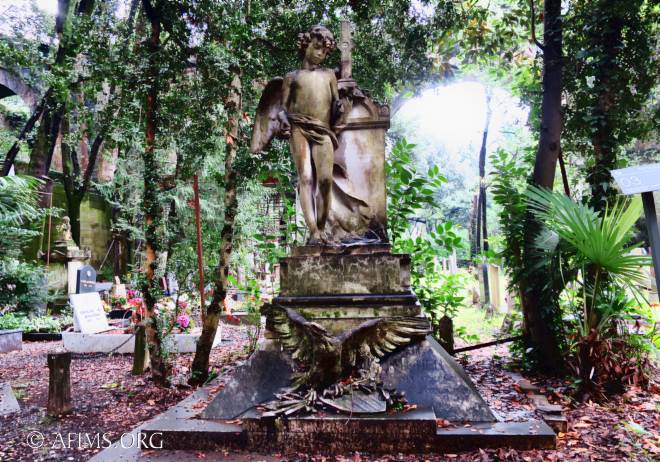Camposanto di Staglieno, Genoa, Italy
American Friends of Italian Monumental Sculpture


From his early work with his father, a cabinetmaker and woodcarver, Luigi Brizzolara, acquired a sense of delicate and precise craftsmanship that imbued his work throughtout his life. Coming to Genoa around the age of 20, he studied under Giovanni Scanzi, one of the leading proponents of the late 19th C. Italian sculptural realism. His sculpture of Ismaele Morente, created when he was about 24 years old, brought Brizzolara his initial fame, and commissions for memorial work soon followed. Influenced by the work of Bistolfi and Rodin, his style blended Art Nouveau with Realism. He produced numerous monuments and public sculpture in Italy, Brazil, and Argentina.
This work suffers from encrustations of dirt, mildew, and biological growth that is breaking down the surface of the white marble. It has also sustained some damage over the years, including loss of part of the angels wings, some fingers, and a few other elements. It can still be saved and preserved so as to continue to speak eloquently to future generations.
James Fletcher, was born in England September 29, 1840; he emigrated to the United States in 1848; served for over three years as private, non-commissioned officer, and first lieutenant in the Third Vermont volunteers during the civil war; after being mustered out of the Army he located in Waverly, Iowa, and engaged in the book and stationary business, and later one of the proprietors and editor of the Waverly Republican; appointed consul at Genoa (Italy) May 14, 1883.
This monument, carved in White Carrara marble, is dedicated to the wife and daughter of James Fletcher, both of whom died during his service in Genoa.